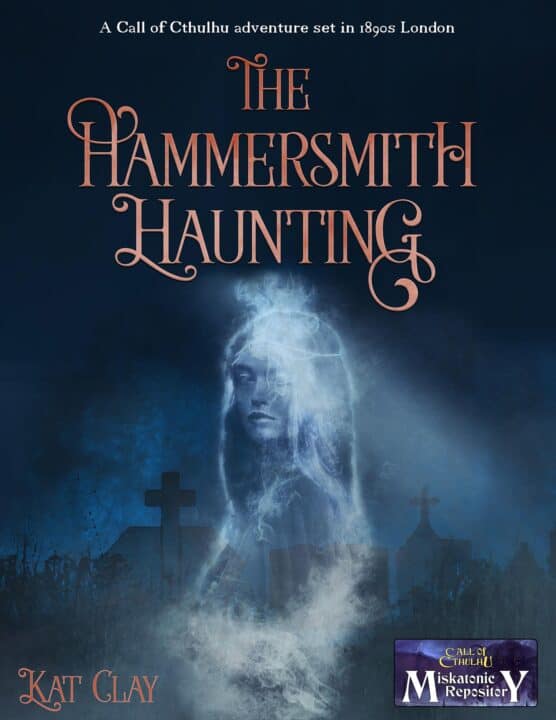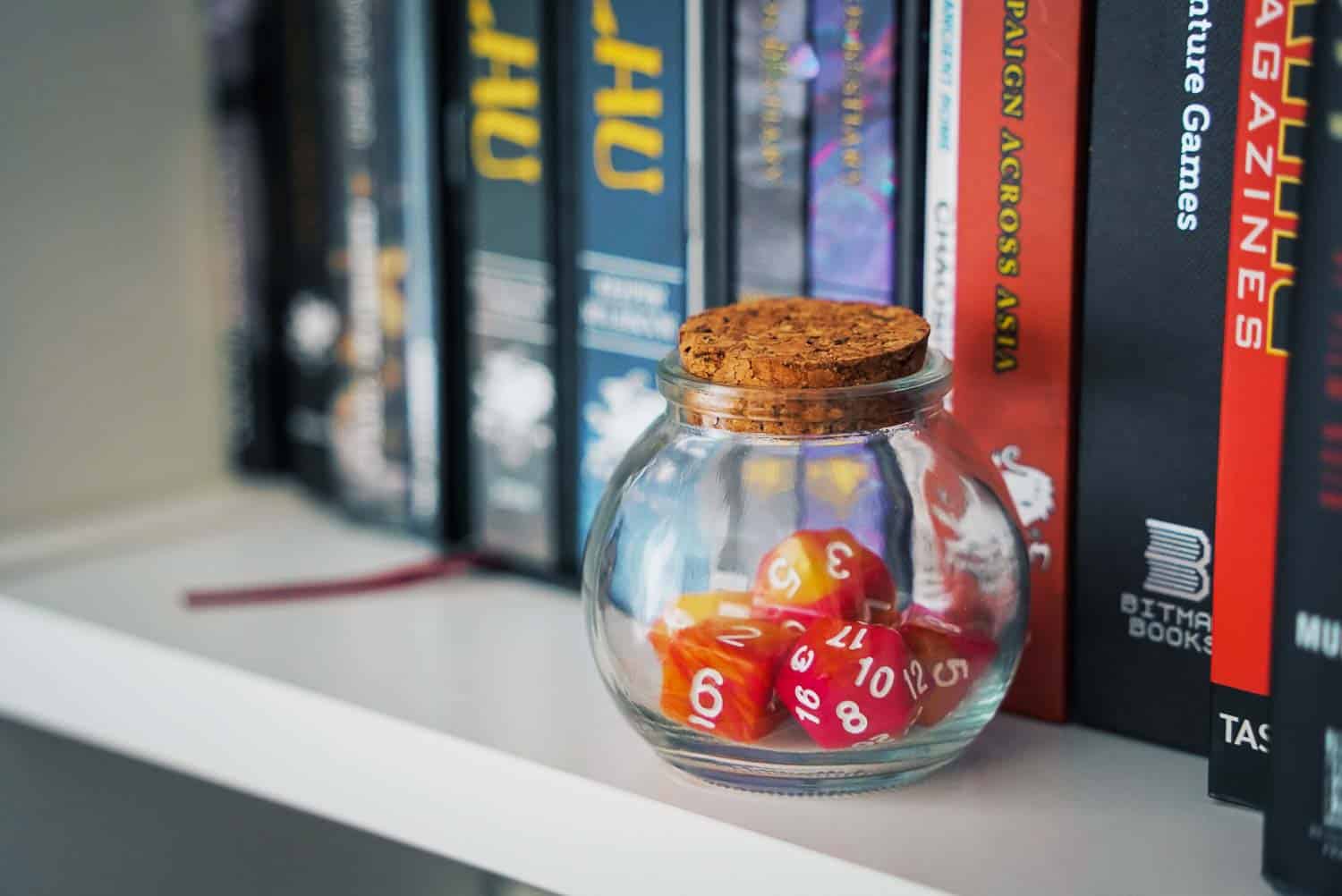It has been a life goal of mine to write a game, and at the end of 2021 I made that happen!
I’ve been playing Call of Cthulhu for a few years now, and really enjoy the combination of historical settings, Cthulhu mythos, and investigating a mystery. Plus, all my characters tend to have fancy hats.
While I really enjoy playing video games, my resources are limited. I figured writing a TTRPG would be an excellent way to satisfy my desire to write a game without spending a lot of money or hiring a programmer.
When I saw Storytelling Collective’s Call of Cthulhu write your first adventure course come up, I enrolled. It would be an enjoyable challenge for me to end out the year with a finished game. My novel is currently on submission, and while I’m in the middle of writing a new novel, I thought I’d take a break to write the game and do something different.
If you’re interested in writing TTRPGs, I can recommend the course. The challenge was to write a one-shot in a month and release it on DriveThru RPG. Which I did, despite writing something that was a fair bit longer than a one-shot.
I wanted to share a few things I learned from my process of writing this first game that I’m going to take into my next project. So here goes…
1. Setting scope is very important
There’s a reason the first lesson in the Storytelling Collective course is on scope. Setting the project’s scope to an achievable limit means you can actually complete the project in the allocated time. There’s no point trying to write a 300-page campaign in one month. The goal of the course was to write a 3500 one-shot adventure.
So, of course, I failed to heed the advice and ended up writing a 10,000-word adventure with four handouts and three maps. Which had flow-on effects to editing and design.
2. Writing a game always takes longer than you think
Following on from scope, you should always add a time buffer of 20% to any creative project, because that’s how long it will probably take. I always underestimate my time, even after writing for years. Things come up. Life happens. You also need time to stop and think. Writing needs room to breathe.
So, while the idea was to get the game finished by the end of November, I finished it a week later. I needed the additional time to do layout after playtesting, and I could only get my playtesters on a certain date. More on that in a second…
In my defence, I knew I had greater capacity to produce more words in a shorter space of time than someone who was new to writing. It’s like a muscle—you work out a lot, and you’ll have more writing fitness. If only this carried over to my physical fitness…
Likewise, I’d previously worked as a graphic designer, so I knew how long it would take me to do the layout. Still, it took me a long time on my weekends to get this done. Allocating the time and sacrificing some of my fun time was necessary to get the project done. But I’m pleased with how it turned out.
3. Playtesting is hard

Ahh, playtesting.
That was fun.
Taking your small game child out into the world to be judged is hard enough, and this playtest involved delayed food deliveries and the hangry players trying to see how much of Australia’s second spiciest hot sauce they could eat.
While I was running the game.
It was a tough session—everyone was in a zany mood—but I learned some vital things from it. The first was to set player expectations at the start. I’m a relatively new keeper and I’m still learning how to run games. I should’ve asked the players to be gentle with me and the game.
I also should have confiscated the hot sauce.
Don’t ask for feedback during the game, as this breaks the fantasy the players are in. Take notes instead and ask the players to make a note of issues they come up against without discussing them at the table.
I also asked for feedback at the end of the game, and this was a bad idea after being hangry and tired myself from handling the unruly players. Getting feedback late at night, my stress threshold was low, whereas if I’d waited for the next day, I would have taken it a lot better.
But playtesting brought out a lot of issues with the game that I couldn’t have picked up without playing it in a live setting. So, it’s an invaluable part of writing a Call of Cthulhu adventure. On that…
4. Don’t gatekeep information
One of the biggest things I learned is that players should be able to get most of the key information to enjoy the game without being blocked by dice rolls. So that if someone fails a die roll, they should still get the information but be penalised. Or they could approach it in a different way—for example, a failed stealth roll could lead to a combat situation.
One issue I’d made in writing The Hammersmith Horror was that most of the cool stuff was hidden behind rolls, and if the players failed them, they didn’t get to experience any of it. I’d thought that adding lots of dice rolls would make the game more fun, but in the end, it hampered the enjoyment of the game. I changed that after playtesting.
5. Your cover matters

It’s something I knew from writing novels, but your cover art is the best promotional tool you have. It sells the book. After sharing my work on social media, several lovely people bought the game based on the cover. I put hours of work into the cover to make it look like a professional game, while channelling the Chaosium colour scheme from the Keeper Rulebook.
I know it’s hard if you don’t have graphic design experience, but it is so worth finding someone to collaborate, or hiring someone to do the cover. People judge the quality of a book by its cover. Your writing might be incredible, but if the cover is bad, it might not sell as well.
I’ll especially flag the importance of paying attention to typography. I’ve got a whole blog post about book covers here, but especially in the TTRPG community I see amazing illustrations or cover art ruined by bad typography.
It’s not hard to license a beautiful font to match the feeling of your game; I licensed Wallington from Envato Elements for the cover of The Hammersmith Haunting, and it sure looks better than Arial Black.
6. Be a good community member
Finally, this goes for all things, but don’t be a jerk.
When you write a game and put it out in the world, it’s hard to know how people will take it, but I was buoyed by the kind response I got from people on Miskatonic Repository and social media.
The community on Storytelling Collective was supportive, and a couple of awesome game creators read my work in draft format, which I did for them as well.
I’ve always been a big believer of putting good out into the world and paying it forwards, not expecting anything in return. I think that’s true of any community, and I was grateful for a lot of the good people in the TTRPG community who have supported my work as a new writer. I’m hoping I can pay that forward in future. So be a good human on the internet and spread some positivity in these difficult times.
I am really excited about tackling a larger Call of Cthulhu project in 2022, but I couldn’t do that without having written a smaller game first. I learned so much from the process. If you want to check out my game online, The Hammersmith Haunting is now available on DriveThruRPG.

Share your thoughts